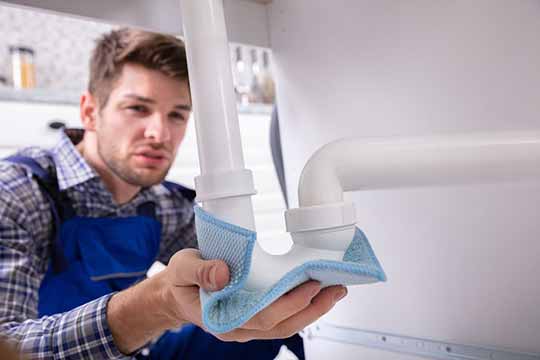
Until you have lived through the experience, you may not know just how much damage one small leak in your home’s plumbing system can cause — if the leak is happening in some hidden part of your home, says Keyrenter Richmond Property Management, such as behind a drywall, fixing the actual damage to your pipes may not cost much money. But restoring your damaged walls and the surrounding areas could cost you thousands of dollars.
Worse still, this problem can happen more than once a year because of the expansion of the plumbing network in an average home. Due to the sheer size of your plumbing, there is always a chance that some part will start to leak, and before you know it, you are looking at significant damage to the structures of your home. The only way to avoid this is to detect potential leaks before they happen.
Or, if this is not possible, you can try to catch leaks before they have the chance to do significant damage to your home. How do you detect leaks in the plumbing when those leaks are happening in a hidden part of the home? While it requires vigilance, you can still tell when your pipes are leaking, even if you don’t see them or evidence of leaks inside your home.
Signs of a hidden plumbing leak in your home
You will notice the following things in your home if a hidden part of your plumbing is leaking.
Water bill spikes
How much you pay for water will constantly change for every billing period. But despite those fluctuations, you pay an average amount every month, and your water bill for any given period should only be slightly lower or higher than that average.
However, if you see a sudden spike in your water bill without any significant changes in your water usage, it could be a sign of a leak in your plumbing. To catch this sign, you need to compare every new water bill with the previous one. You will miss this sign if you are not intentional about comparing your water bills.
Water stains on walls and ceilings
Water seeping into the walls or ceilings of your home will often leave marks on the walls and ceilings. For instance, if you have a leak inside a cabinet under the sink in a second-floor washroom, it can leave stains on the ceiling of the room directly below the bathroom.
Note that stains on walls or ceilings may not happen instantly around the area where the leak is located. Water from a leak can flow to cover a wide area or trickle into another part of the home, where it will leave stains.
Musty odors in the house
A leak in your home will usually lead to water collecting in that part of the house. Since the leak is hidden in a part of the home with little light and airflow, the water will not get a chance to dry.
Over time, that water will start to give off a strong smell. The water itself does not have an odor, but the bacteria inside it can make it stale and emit a musty or earthy odor. If you notice a moldy or musty smell every time you walk past a corner of the home, you might have a leak in that part of the house.
Damaged walls and flooring
If water from a leak settles into the flooring in one of your rooms, it will damage the flooring. Depending on the type of flooring, that damage will show up in different ways. There may be signs of buckling, discoloration, staining, or cracking.
Along with damage to your flooring, the walls of your home may also show signs of damage. A wall that is warping or bubbling is probably being attacked by water. You can also expect to see putty-like soft areas if this is drywall.
Mold and mildew
If there is a leak in your home, expect mold and mildew to grow in that part of the house. Hidden leaks provide the perfect environment for growing fungi. Mold and mildew love places with little light, poor aeration, and moisture.
These are the exact conditions you find in those parts of the house where there is a hidden leak. If there is a persistent mold odor in your home, or you can see mold growing in the corners, that could be a sign of a leak in that part of the house.
Now that you have confirmed a hidden leak in your home, what next? You need a professional plumber‘s help to pinpoint the leak’s location and solve the problem.
